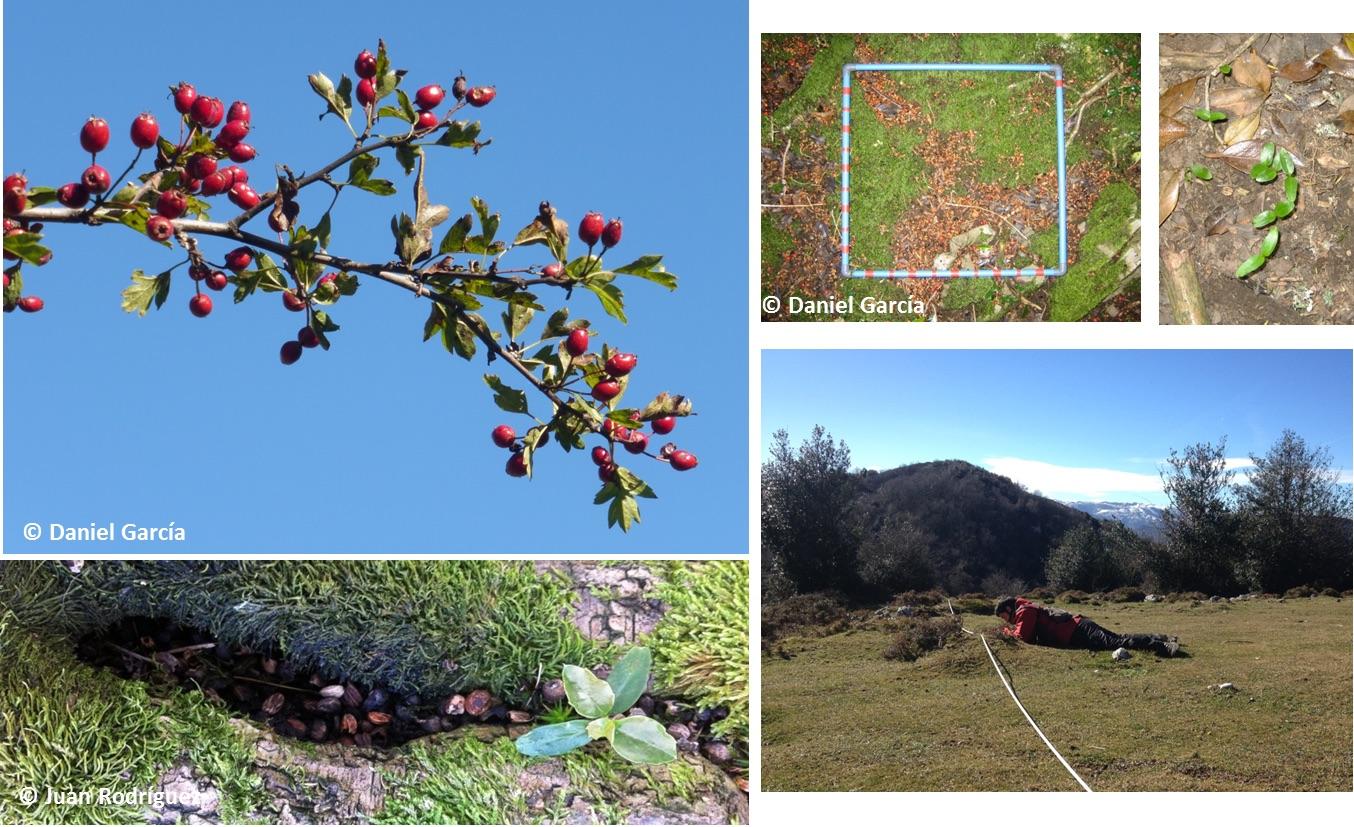Sometimes “less is more”… ecological networks also prove us right
Submitted by editor on 17 June 2016. Get the paper!
Get the paper!The networks of plant-animal interactions represent a perfect tool to capture the complexity of ecological communities, and, simultaneously, to relate the effect of this complexity on ecosystem functioning. For example, seed dispersal, an important ecological process that drives vegetation dynamics, emerges from mutualistic plant-frugivore networks. However, looking at just what frugivorous animal eats or disperses which plant species and how much is not enough for understanding the effect of networks on the ecosystem service of plant regeneration. We need to know how effective are the different frugivores in bringing the seeds of the different plants to places suitable for their establishment in the long term.

Fig. 1 Study area in Sierra de Peña Mayor (Asturias, Spain)
In our study (“Incorporating seed fate into plant-frugivore networks increases interaction diversity across plant regeneration stages”) we built seed dispersal networks not only accounting for the number of seeds dispersed by animals, but also for seed fate after dispersal. We focused on a system composed of three species of fleshy-fruited trees (hawthorn Crataegus monogyna, holly Ilex aquifolium and yew Taxus baccata) and six species of avian seed dispersers (Turdus spp.) in the temperate secondary forest of the Cantabrian Range (northern Iberian Peninsula). This is a straightforward system in which we expect that both frugivore and plant traits will affect the recruitment expectancies of seeds once they have been removed from mother trees by frugivores.

Fig. 2 Quantifying birds’movements, flight distances, perching habitats,
as well as the number of fruits consumed from each tree species.
We combined intensive field sampling of frugivore behavior and spatial activity with the assessment of the seed-to-seedling transitions from surveys of seed rain, seedling emergence, and seedling survival. In that way, we were able to construct interaction matrices between bird and tree species, both at the seed deposition and the seedling recruitment stages. We found global changes in interaction frequencies from seed deposition to seedling recruitment networks, which were highly informative regarding the final distribution of the effects of the frugivore species on the plant community. Interaction diversity increased from seed deposition to seedling recruitment, with tree-bird interactions more evenly distributed across species pairs at the recruitment stage. Such a trend was explained by between-plant differences in post-dispersal seed fate rather than by differences between frugivores in seed deposition patterns. This fact, indeed, may be interpreted as a situation of “less is more”, as plant species consumed and dispersed at lower quantities by frugivores, but presenting higher probabilities of survival after dispersal, finally dominated the seedling community.
With this study, we highlight that considering demographic data is crucial to assess the functional outcome of plant-animal mutualistic networks.

Fig.3 Intensive field sampling also incorporated surveys of fruit abundance, seed deposition by birds, seedling emergence and survival in different microhabitats
Isabela Donoso